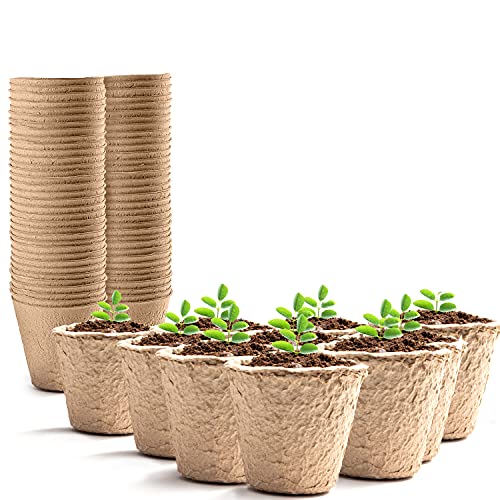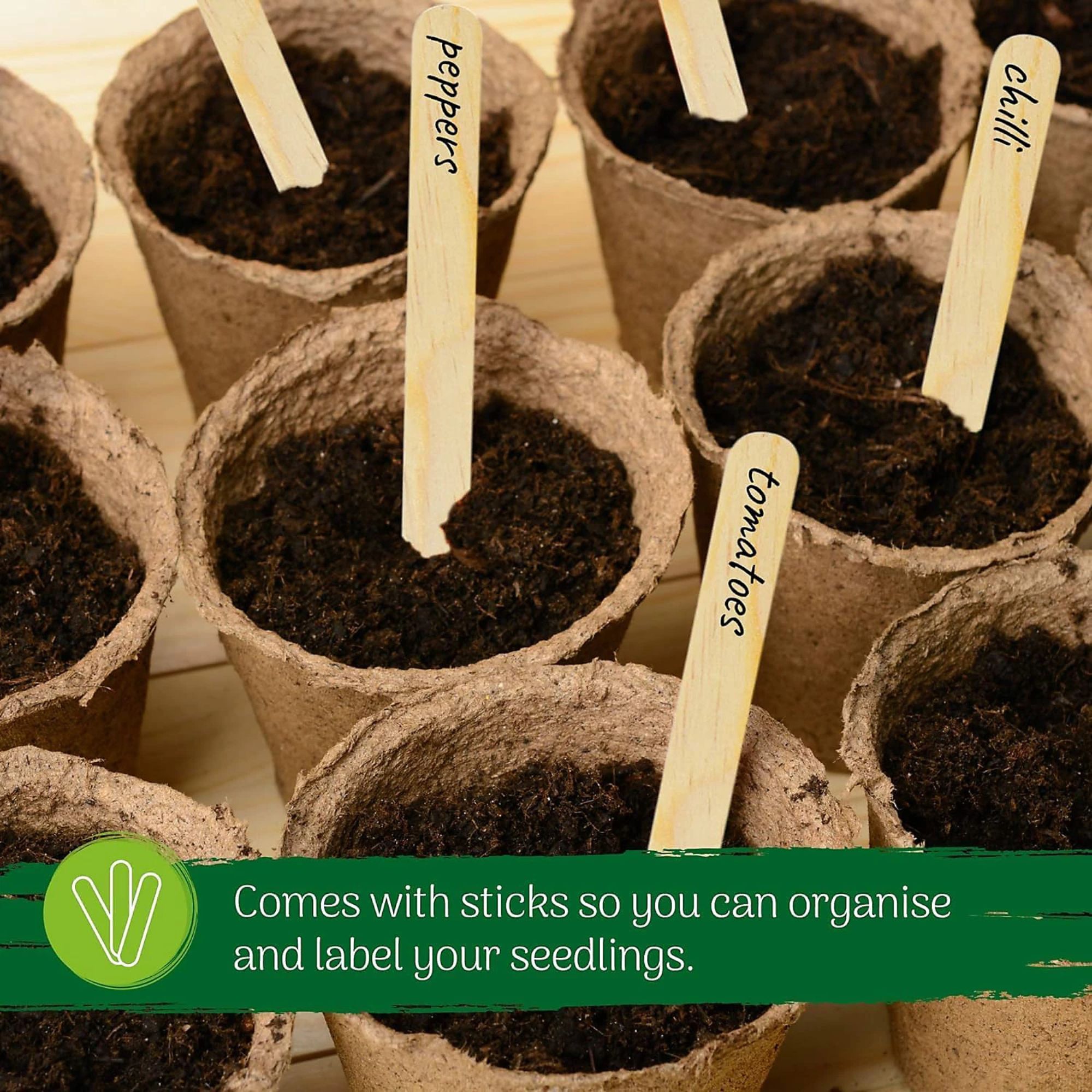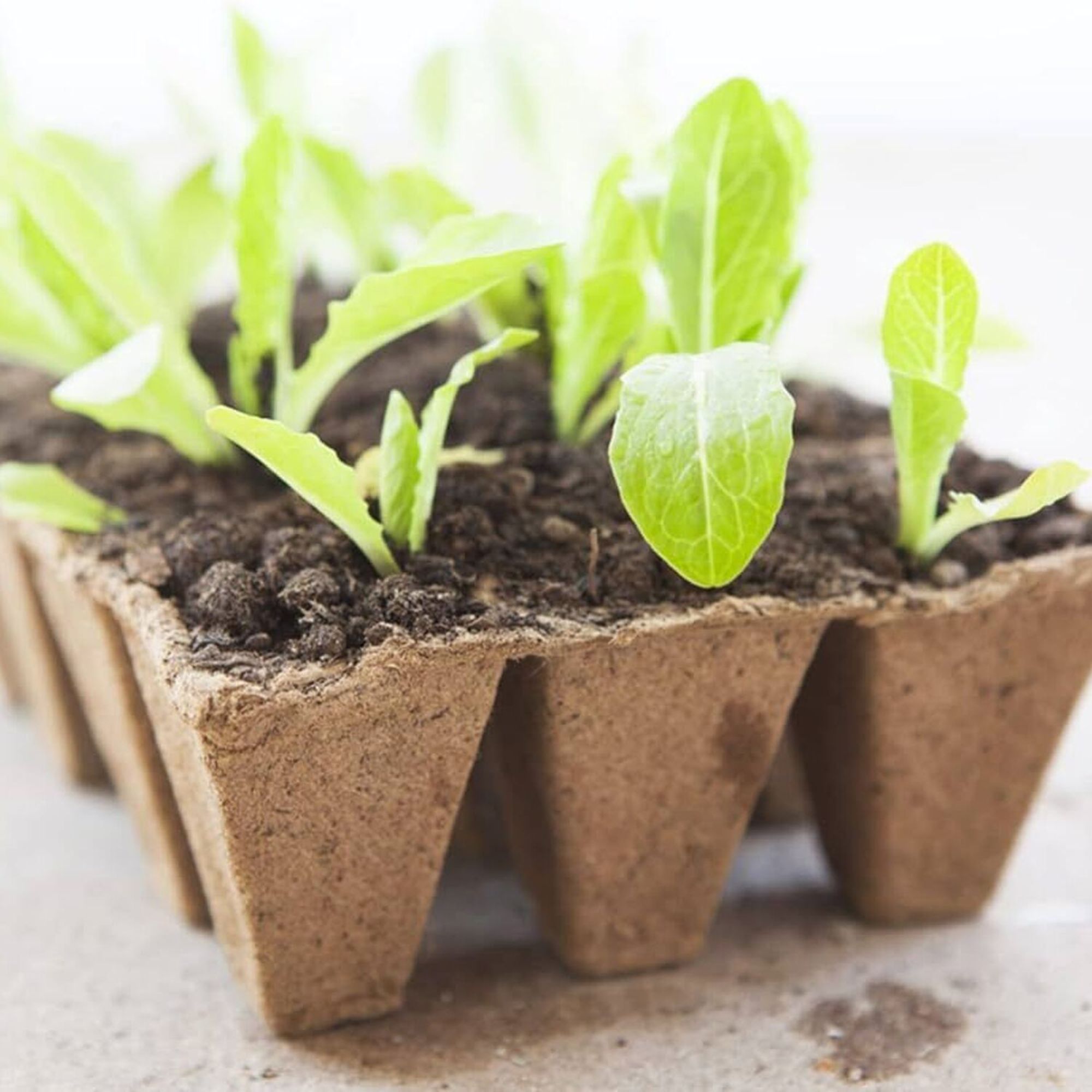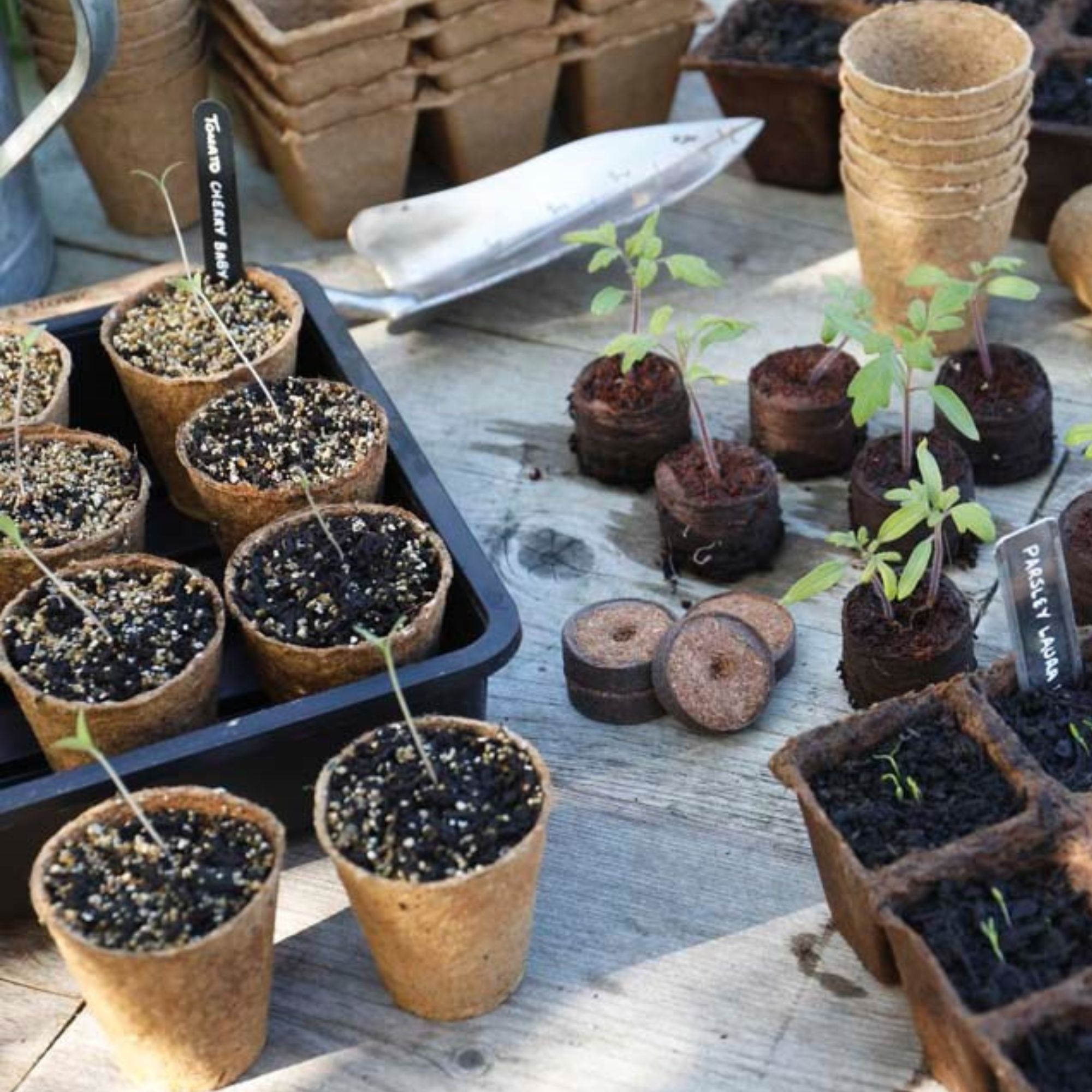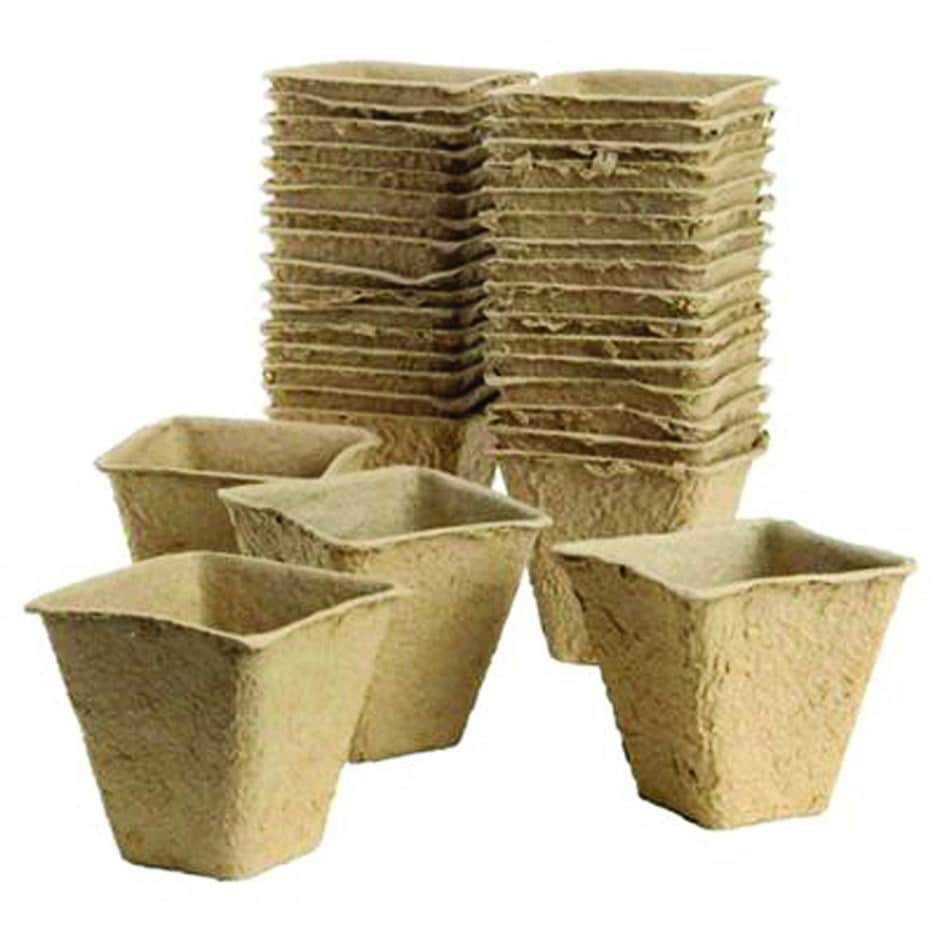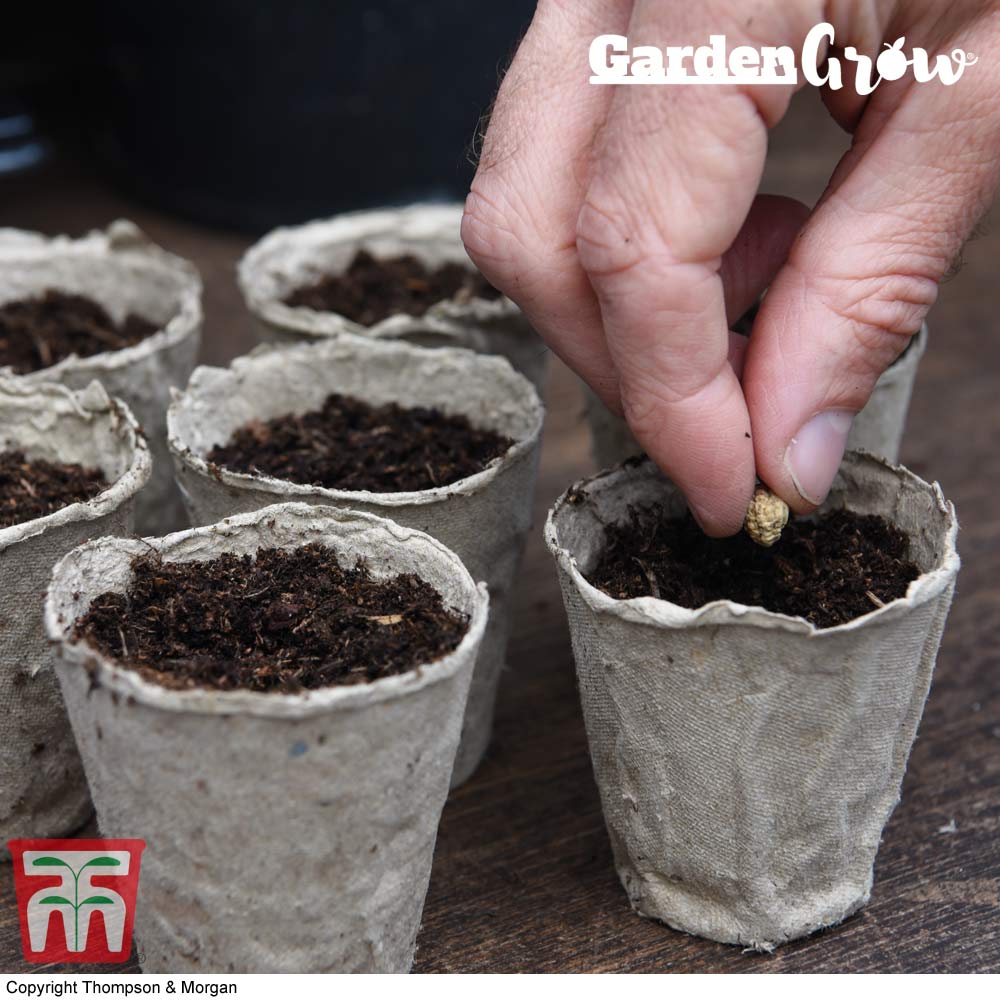I'm a gardens editor and these are my 6 go-to places to buy biodegradable pots if you're growing your own flowers or vegetables from seed
Save pounds (and save the planet) with our round-up of eco-friendly biodegradable pots
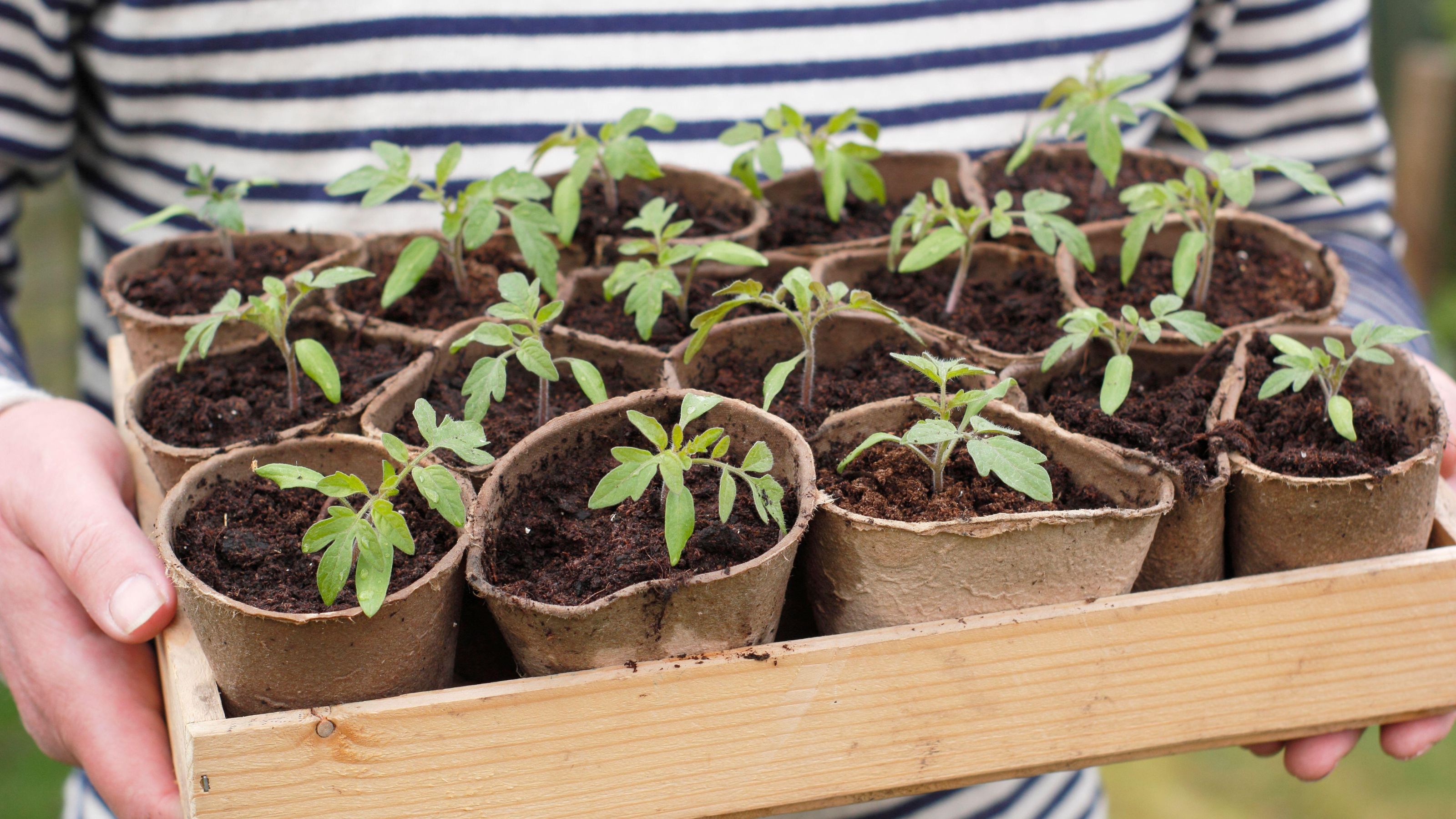

With a modest-sized garden and allotment to look after, if I can start any plants, flowers and veg off from seed, I’m always happy to give it a go and save money where I can. But I do get through an awful lot of pots, so making the switch to biodegradable pots was a game-changer.
When it comes to where to buy biodegradable pots, picking them up as cheaply as possible is a must, so I’ve found that buying them in bulk online can cut costs by quite a bit. They can be stashed away in the shed without taking up too much space, so you can use them as and when you need them. And they’re an eco-friendly option in a container garden, breaking down in the soil eventually if you’re planting vegetables or flowers, rather than having to be added to an ever-growing pile of non-recyclable pots.
‘Biodegradable pots are a fantastic option for both beginner and experienced gardeners,’ says Hayden Salt, garden centre manager at Jacksons Nurseries. ‘They’re an eco-friendly alternative to plastic and are especially useful when you're growing from seed or transplanting young plants, as they reduce root disturbance and transplant shock.’
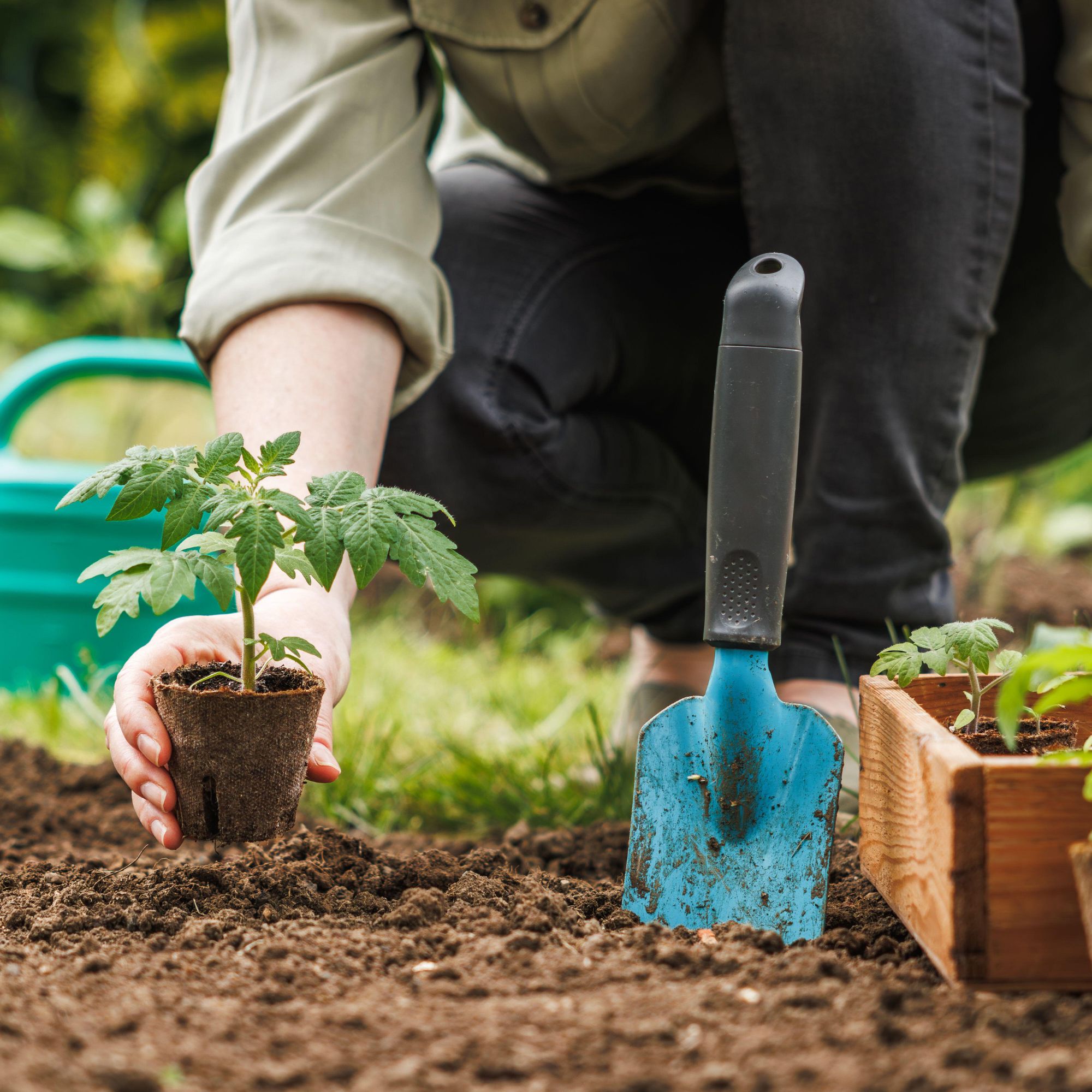
Where to buy biodegradable pots: quick list
- Amazon: a huge range of different-shaped biodegradable pots in various sizes
- B&Q: varied range of pots and materials, including fibre, paper, coir and coco fibre
- The Range: an affordable range of pots and trays in assorted sizes
- Primrose: selection of sizes, plus support poles and plug pellets
- Crocus: Budget fibre pots, seed trays and liners, plus paper pot makers
- Thompson & Morgan: Coir pots and other biodegradable essentials
Best places to buy biodegradable pots
FAQs
Are biodegradable pots worth it?
‘One of the biggest benefits of biodegradable pots is that they can be planted directly into the ground, so the roots don’t have to be disturbed,’ says Hayden. ‘That means your plants get a gentler start in life - they don’t suffer the stress of being pulled out and repotted, which can really slow down growth.’
‘They’re also a more sustainable option for the planet. Many are made from natural materials like coir (coconut fibre), paper pulp, peat, or even cow manure. These break down gradually in the soil, adding organic matter and improving the structure over time.’
‘These pots are ideal for vegetables and fast-growing annuals - things like courgettes, beans, peas, tomatoes and sunflowers - as well as herbs and bedding plants. Anything that doesn’t love root disruption will benefit,’ adds Hayden. ‘They’re also great for gardeners with small gardens or allotments, as you can sow seeds indoors or in a greenhouse, then plant out without the faff of repotting.’
What's the best way to use biodegrable pots?
‘It’s important to water biodegradable pots well and keep an eye on moisture levels, as some of them dry out faster than plastic,’ advises Hayden. ‘I always recommend placing them in a tray or container while your seedlings are growing, so they hold together and maintain their shape until planting.’
Sign up to our newsletter for style inspiration, real homes, project and garden advice and shopping know-how
‘When you’re ready to transplant or repot flowers, make sure the pot is already moist, and plant the entire thing in the ground. If the pot has a thicker rim or base, it’s a good idea to gently tear or loosen it to help the roots break through faster.’
‘Try to use biodegradable pots in tandem with peat-free compost and rainwater if possible - it keeps the whole growing process more environmentally friendly. And don’t forget that not all biodegradable pots break down at the same speed,’ adds Hayden.
‘Some cheaper ones can become waterlogged or mouldy if overwatered, while others may need to be slightly torn before planting to speed up decomposition.’
Will you be making the switch to biodegradable pots in your garden this summer?

Lisa is a freelance journalist who has written about interiors for more than 25 years. Previously editor of Style at Home magazine, she has worked on all the major homes titles, including Ideal Home, Country Homes & Interiors, 25 Beautiful Homes and Homes & Gardens. She has covered pretty much every area of the home, from shopping and decorating, crafts and DIY to real homes and makeovers and now regularly writes gardening stories for Ideal Home.
You must confirm your public display name before commenting
Please logout and then login again, you will then be prompted to enter your display name.
